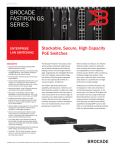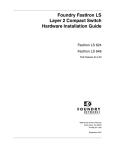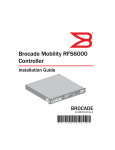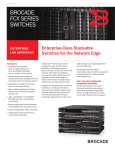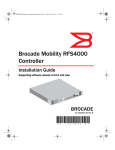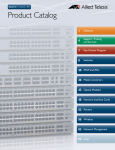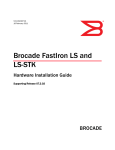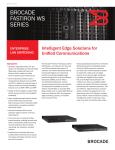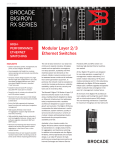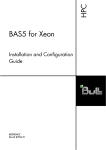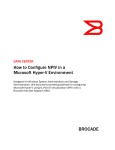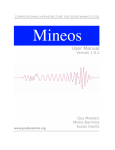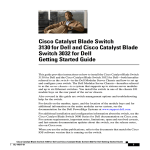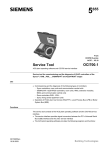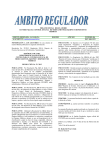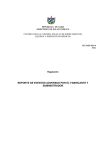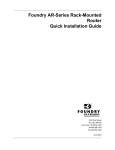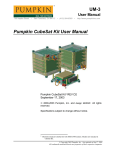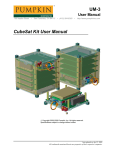Download Brocade FLS648 network switch
Transcript
Data Sheet BROCADE FASTIRON LS SERIES Enterprise LAN switching HIGHLIGHTS • Compact 24-port and 48-port 10/100/1000 Mbps access switch models • Field upgradeable with 10 Gigabit Ethernet, and IronStack stacking for scalable and secure network access • Advanced IronWare™ Layer 2 Ethernet switching with robust suite of security capabilities • Base Layer 3 capabilities enable routed topologies to the network edge with RIP v1/v2 route announcement, static routes, and VRRP • Enhanced security features in non-stacking deployments include DHCP snooping and dynamic ARP inspection • Optional edge routing upgrade in non-stacking configuration adds OSPF and RIP dynamic routing for routed edge topologies* • Open and standards-based network access control features multi-host 802.1x access control, multi-device MAC authentication, and policy-controlled MAC-based VLANs • Low packet latency and advanced Quality of Service (QoS) ensure dependable voice, video and data delivery Stackable, Secure, 10GBE Access Switches The Brocade® FastIron® LS Series access switch family provides enterprise organizations with a flexible and feature-rich solution for building a secure, high-value, intelligent network edge. Upgradeable with 10-Gigabit Ethernet, and IronStack stacking technology, the FastIron LS Series gives enterprises the cost and operational benefits of a “pay-as-you-grow” architecture. The FastIron LS Series delivers the scalability, QoS assurance, feature richness and advanced security needed to implement an intelligent high-value solution that can scale to meet future growth at the network edge. An enterprise may initially deploy a standalone FastIron LS switch and later upgrade to IronStack stacking to scale the installation from one to eight stacked units to meet growing user requirements. The FastIron LS series is designed to conserve space and power. Their one rack unit height and shallow depth (~33 cm/13 inches) allow • Embedded hardware-based sFlow for enhanced traffic visibility, accounting and security • IronShield™ 360 intrusion protection delivers dynamic, real-time protection from network and host-based attacks • IronStack technology scaling up to eight FastIron LS units in a logical chassis and 384 10/100/1000 Mbps ports, with automatic healing in case of link or switch failures. *Available only on the standalone FastIron LS. This feature is not available on the IronStack enabled FastIron LS. them to be installed in cabinets in which larger systems cannot be supported. Additionally, the FastIron LS Series may be deployed in metro area networks connecting branch offices with 10-GbE uplinks. In this environment, important features include the Brocade Metro Ring Protocol (version I and II) for building resilient ring-based topologies VLAN stacking and advanced multicast capabilities including IGMPv1/v2/v3 and MLD v1/v2 snooping for controlling multicast traffic for high-bandwidth content delivery. The FastIron LS switches are designed for flexibility, offering upgrade options for redundant power, 10-Gigabit Ethernet, stacking and dynamic routing. The FastIron LS switches include an internal, non-removable AC power supply. An optional one rack unit high AC power supply unit can be used to provide redundant power for up to four FastIron LS switches. The FastIron LS series is available in stacking and nonstacking model configurations. Non-Stacking models (Standard and Edge Premium): These models can be optionally preconfigured with or upgraded to Edge Premium (EPREM) routing software (OSPF and RIP support). • FastIron LS 624: 20 x 10/100/1000 Mbps ports plus 4 combination RJ45/SFP Gigabit Ethernet (copper or fiber) ports. The switch includes 3 slots for optional 1 port 10GbE modules • FastIron LS 648: 44 x 10/100/1000 Mbps ports plus 4 combination RJ45/SFP Gigabit Ethernet (copper of fiber) ports. The switch includes 2 slots for optional 1 port 10GbE modules Stacking models (Standard only): • FastIron LS 624-STK: 20 x 10/100/1000 Mbps ports plus 4 combination RJ45/ SFP Gigabit Ethernet (copper or fiber) ports plus 2 x 10GbE CX4 stacking ports and one open slot for an optional 1 port 10GbE module • FastIron LS 648-STK: 44 x 10/100/1000 Mbps ports plus 4 combination RJ45/SFP Gigabit Ethernet (copper or fiber) ports plus 2 x 10GbE CX4 stacking ports Target Applications Offering a powerful set of Layer 2 switching, optional edge Layer 3 routing capabilities, extensive security features, expandability, and compact design, the FastIron LS Series can be used to provide high speed, secure network access in a broad range of environments including: • Enterprise: high performance network access for desktops, servers, workstations, mobile networks, and other Ethernet connected endpoints • Education: secure network access connectivity for K-12 and universities • Metro networks: cost-effective in-building MTU or CPE for unicast and multicast services delivery Primary Features and Benefits Performance and Scalability Today’s enterprise organizations require cost-effective, flexible, and secure solutions for delivering communication services on a network architecture that can scale and evolve to meet their ever-changing needs. The FastIron LS Series meets these requirements with wire-speed architecture that delivers high-throughput for a range of Ethernet endpoints while assuring QoS for business critical applications. For cost-effective and rapid scaling at the network edge, the FastIron LS can be upgraded to support the Brocade IronStack technology, which allows stacking up to eight units that act as a logical chassis. The FastIron LS IronStack system supports 40Gbps switching capacity between stacked units providing a high-capacity interconnect across the stack. FastIron LS IronStack supports stacking over copper and fiber cables. This provides for flexible stack configurations in which stacked units can be separated by more than several hundred meters of fiber. The FastIron LS Series makes it easy to deploy a cost-effective, high-performance solution today that can be upgraded to support 10-GbE and stacking as needed to scale the intelligent edge. The FastIron LS switches support two types of single port 10-Gigabit Ethernet pluggable modules, the FLS-1XGC and the FLS-1XG. The FLS-1XGC supports a CX4 connector providing a cost-effective, high performance 10-Gigabit Ethernet solution for inter-switch or server-to-switch connectivity. The FLS-1XG supports a small form factor pluggable XFP transceiver. Supported XFP transceivers include SR, LR, ER, ZR, and ZRD optics supporting fiber lengths up to 80 Km. The Brocade IronStack Solution Ease of Use: Plug and Play The FastIron LS series may be ordered pre-configured with the Brocade IronStack stacking technology or upgraded in the field. IronStack is an advanced stacking technology that supports stacked configurations in which as many as eight FastIron GS and/or FastIron LS switches can be interconnected and maintain the operational simplicity of a single switch. An IronStack can be a mix-and-match of different FastIron GS and FastIron LS switch models providing for very flexible stack configurations. Each IronStack enabled FastIron GS or LS model can support up to 40Gbps of stacking bandwidth per unit. IronStack configurations can be built using 10-GbE CX4 copper or XFPbased fiber connections. When XFP-based fiber connections are used, an IronStack configuration can be extended between racks, floors, and buildings with fiber lengths up to several hundred meters. The FastIron LS Series supports the IEEE 802.1AB LLDP and ANSI TIA 1057 LLDPMED standards that enable organizations to deploy interoperable multi-vendor solutions. Configuring IP endpoints, such as VoIP stations can be a complex task requiring manual and time-consuming configuration. LLDP and LLDP-MED address these challenges, providing organizations with a standard and open method for configuring, discovering, and managing their network infrastructure, thereby simplifying and reducing the cost of operations. For example, LLDP-MED provides an open protocol for configuring QoS, security policies, VLAN assignments, and service priorities. Additionally, LLDP-MED provides for the discovery of device location and asset identity, information that is used for inventory management and by emergency response services, such as Enhanced 911 (E911). These sophisticated features make network services easier to deploy and operate while enabling new and critical services. The FastIron LS STK models are preconfigured with two one-port 10-GbE CX4 modules, expanded CPU memory, an IronStack license (IronStack PROM) and software. The CX4 module in the STK models can be replaced in the field with any of the optional 10-GbE modules available for the FastIron LS. An IronStack system operates as a single logical chassis (with a single IP management address) and supports crossmember trunking, mirroring, switching, static routing, sFlow, multicast snooping and other switch functions across the stack. An IronStack has a single configuration file and supports remote console access from any stack member. Support for active-standby controller failover, stack link failover, and hot insertion and removal of stack members delivers the resilience that is typical of higher end modular switches. The FastIron LS Series supports DHCP client-based auto-configuration, simplifying customer deployment and configuration providing true Plug-and-Play. Enterprises can use this feature to automate the IP address and feature configuration of FastIron LS switches without the presence of a highly-trained network engineer on-site. Technicians can simply power up a new FastIron LS and the unit will automatically receive an IP address and configuration from DHCP and TFTP servers. Autoconfiguration provides an intelligent solution to reduce operating expenses and simplify network management. Comprehensive Enterprise-Class Security Traffic Monitoring and Lawful Intercept FastIron LS switches are powered by the Brocade IronWare operating software, which offers a rich set of Layer 2 switching services and Layer 3 routing functionality, an advanced security suite for network access control (NAC) and denial of service protection, and QoS. IronWare embedded security features include protection against Denial of Service (DOS) attacks via TCP SYN, ICMP smurf attack prevention, and broadcast and multicast packet rate limiting. The FastIron LS also supports key security features such as Spanning Tree Root Guard and BPDU Guard to protect network spanning tree operation. In non-stacking configurations, the FastIron LS series offers additional security features, including dynamic ARP inspection and DHCP snooping to protect against address spoofing and manin-the middle attacks. In response to today’s heightened security environment, organizations may be required to set up traffic intercept (lawful intercept). For example, in the United States, the Communications Assistance for Law Enforcement Act (CALEA) requires that businesses be able to intercept and replicate data traffic directed to a particular user, subnet, port, etc. This capability is particularly essential in networks implementing IP telephony. The FastIron LS provides the capability necessary to support this requirement through ACL-based Mirroring, MAC Filter-based Mirroring, and VLAN-based Mirroring. Network managers can apply a “mirror ACL” on a port to mirror a traffic stream based on IP source/destination address, TCP/UDP source/destination ports, and IP protocols such as ICMP, IGMP, TCP, and UDP. A MAC filter can be applied on a port to mirror a traffic stream based on a source/destination MAC address. VLANBased mirroring is another option for CALEA compliance. Many enterprises have servicespecific VLANs, such as voice VLANs. With VLAN mirroring, all traffic on an entire VLAN within a switch can be mirrored, or specific VLANs can be transferred to a remote server. Network Access Control Network managers can rely on features such as multi-device and 802.1X authentication with dynamic policy assignment to control network access and perform targeted authorization on a peruser level. FastIron LS switches also support enhanced MAC policies with the ability to deny traffic to and from a MAC address on a per-VLAN basis. This powerful tool allows network administrators to control access policies for each endpoint device. Standards-based NAC enables network operators to deploy best-of-breed NAC solutions for authenticating network users and validating the security posture of a connecting device. Support for policycontrolled MAC-based VLANs provides additional control of network access, allowing for policy-controlled assignments of devices to Layer 2 VLANs. Threat Detection and Mitigation Support for embedded, hardware-based sFlow traffic sampling extends the Brocade IronShield 360 security shield to the network edge. This unique and powerful closed loop threat mitigation solution uses best-of-breed intrusion detection systems to inspect sFlow traffic samples for possible network attacks. In response to a detected attack, IronView® Network Manager (INM) can apply a security policy to the compromised port. This automated threat detection and mitigation stops network attacks in real time, without human intervention. This advanced security capability provides a network-wide security umbrella without the added complexity and cost of ancillary sensors. Advanced Multicast Features FastIron LS switches support a rich set of Layer 2 multicast snooping features that enable advanced multicast services delivery. Internet Group Management Protocol (IGMP) snooping for IGMP version 1, 2, and 3 is supported. IGMPv3 sourcebased multicast snooping improves bandwidth utilization and security for multicast services. such as IPv4 static routes, virtual interfaces (VE), routing between directly connected subnets, RIPv1/v2 announce, VRRP, DHCP Relay, and routed interfaces. To enable multicast service delivery in IPv6 networks, the FastIron LS supports Multicast Listener Discovery (MLD) v1 and v2 snooping - the multicast protocols used in IPv6 environments. In non-stacking configurations, the FastIron LS models support an optional Edge Layer 3 feature set (EPREM)*. These edge Layer 3 features enable dynamic routing via OSFPv1/v2 and RIPv1/v2 in addition to the Base Layer 3 features. With FastIron LS Base Layer 3 and the optional EPREM upgrade, network managers can deploy end-to-end Layer 3 networks and deploy the same routing policies from edge to core, simplifying network design and operations. Building Resilient Networks with Advanced Layer 2 and Layer 3 Protocols Unified and Secure Element Management Software features such as Virtual Switch Redundancy Protocol (VSRP), the Brocade Metro Ring Protocol (MRP I and II), Rapid Spanning Tree Protocol (RSTP), protected link groups, 802.3ad Link Aggregation, and trunk groups provide alternate paths for traffic in the event of a link failure. Subsecond fault detection utilizing Link Fault Signaling and Remote Fault Notification ensures rapid fault detection and recovery. Enhanced Spanning Tree features such as Root Guard and BPDU Guard prevent rogue hijacking of spanning tree root and maintain a contention and loop-free environment, especially during dynamic network deployments. Additionally, the FastIron LS supports Port Loop Detection on edge ports that do not have spanning tree enabled. This capability protects the network from broadcast storms and other anomalies that can result from Layer 1 or Layer 2 loopbacks on Ethernet cables or endpoints. Base Layer 3 functionality enhances the capability of the FastIron LS IronStack and standalone models. Base Layer 3 allows enterprises to use simple Layer 3 features The Brocade INM provides unified network management for the FastIron LS Series. INM greatly simplifies network operations, provisioning, troubleshooting, and alarm reporting. INM offers multilevel access security on the console and a secure Web management interface that prevents unauthorized users from accessing or changing the switch configuration. INM employs a Java-based network configuration and management tool that displays, in graphical detail, network and application level traffic information. Network managers can accurately monitor overall networking operation, zero in on hot spots, and quickly diagnose and troubleshoot difficulties before they develop into widespread network problems. The FastIron LS Series includes Secure Shell (SSHv2), Secure Copy, and SNMPv3 to restrict and encrypt management communications to the system. Additionally, support for Terminal Access Controller Access Control System (TACACS/TACACS+) and RADIUS authentication ensure secure operator access. *Available only on the standalone FastIron LS. This feature is not available on the IronStack enabled FastIron LS. Fault Detection FastIron LS switches support logical fault detection through software features such as Link Fault Signaling (LFS), Remote Fault Notification (RFN), Protected Link Groups, and Unidirectional Link Detection (UDLD). • Link Fault Signaling (LFS) is a physical layer protocol that ensures bi-directional communication on a link between two 10-GbE switches, thereby allowing switches on both sides to disable the link. • Remote Fault Notification (RFN) enabled on 1 GB transmit ports notifies the remote port whenever the fiber cable is either physically disconnected or has failed. When this occurs the devices on both sides of the link disable the link and turn OFF the associated LEDs. • Protected Link Groups minimize disruption to the network by protecting critical links from loss of data and power. In a protected link group, one port in the group acts as the primary or active link, and the other ports act as secondary or standby links. The active link carries the traffic. If the active link goes down, one of the standby links takes over. • UDLD monitors a link between two FastIron LS switches and brings the ports on both ends of the link down if the link fails at any point between the two devices. FastIron LS switches support enhanced Digital Optical Monitoring of Brocade XFP optics providing real time detection resulting in reduced down time. Network managers can use the enhanced Digital Optical Monitoring capability to monitor the health and strength of the transceivers. Key optic parameters that can be monitored include TX/RX power, temperature, and bias current. The switch will generate alarms when any of these parameters go beyond the normal range. In addition, the FastIron LS switches support stability features such as Port Flap Dampening, single link LACP, and Port Loop Detection. Port Flap Dampening increases the resilience and availability of the network by limiting the number of port state transitions on an interface. This reduces the protocol overhead and network inefficiencies caused by frequent state transitions occurring on misbehaving ports. Single link LACP provides a fast detection scheme for unidirectional or bi-directional faults. This standards-based solution works with other switch vendors. The Port Loop Detection feature enables network managers to detect and prevent Layer 1 and Layer 2 loops without using STP. Enterprises that do not enable a Layer 2 Protocol, such as STP to detect physical loops at the edge can use Port Loop Detection. Key Features Summary Flexible and High-Capacity Architecture • 20-port 10/100/1000 Mbps plus 4 combination RJ45/SFP Gigabit Ethernet ports, option for up to three 10-GbE ports • 44-port 10/100/1000 Mbps plus 4 combination RJ45/SFP Gigabit Ethernet ports, option for up to two 10-GbE ports • Field upgradeable to support IronStack technology • Field upgradeable to support EPREM Layer 3 routing features (standalone operation only) • Upgradeable with 1-port 10-GE XFP module that supports SR, LR, ER, ZR, CX4, and ZRD XFP optics • Upgradeable with 1-port 10-GE integrated CX4 transceiver module for low cost, high-bandwidth connectivity • 1RU height with a depth of 12.95”/32.84 cm • MAC table size : 16000 • Max number of VLANs: 4096 IronStack Stacking Technology • Up to 8 units in a single stack. Ability to mix and match FastIron LS and FastIron GS models in a single stack • Up to 40 Gbps of stacking bandwidth per unit • Support for stacking on 10GbE CX4 and 10GbE XFP ports • Logical chassis-like operations, supporting features such as static trunking, LACP, mirroring, switching, static routing, sFlow, multicast snooping across stack-members • Support for automatic failover of active controller and hot insertion and removal of stack-members Layer 3 Capabilities • Base Layer 3 software supporting features such as static routes, routing between directly connected subnets, RIPv1/v2 (announce only), virtual interfaces, VRRP and ECMP • Optional Edge Layer 3 Premium (EPREM)* upgrade providing dynamic Layer 3 routing via OSPF v2 and RIP v1/v2 in addition to features supported in base Layer 3 software. • Up to 1000 IPv4 routes IronShield Advanced Security • Multilevel access security for console access • IronShield 360—System-wide, automated closed-loop threat detection and mitigation solution • Secure, Web-based management • Secure Shell and SNMPv3 restrict and encrypt communications to the management interface and system • Terminal Access Controller Access Control Systems (TACACS/TACACS+) and RADIUS operator authentication • Secure Shell (SSHv2), SCP, and SNMPv3 secure remote management access and communications • MAC filters, Layer 3/Layer 4 ACLs and binding the ACL to TELNET, Web management and SNMP interface for secure management access • IEEE 802.1x authentication including multiple device authentication and dynamic VLAN, ACL, and MAC filter assignment for authenticated clients • Private VLANs provide security and isolation between switch ports to help ensure that users cannot snoop on other users’ traffic *Available only on the standalone FastIron LS. This feature is not available on the IronStack enabled FastIron LS. Key Features Summary Continued • Denial of Service Protection—Monitoring, throttling, and locking out of ICMP and TCP SYN traffic both to the management address of the switch and for transit traffic • Man-in-the-Middle prevention using Dynamic ARP Inspection and DHCP Snooping* • Port Security and MAC Address Locking limits the number MAC addresses learned on a port. Using Port Security network managers can allow specific MAC addresses access to the network for specific time periods. • MAC address authentication including multiple device authentication and dynamic policy configuration • Policy-controlled MAC-based VLANs provide additional control Advanced Quality of Service • Packet classification, reclassification, policing, marking, and re-marking • Identification, classification, and reclassification of traffic based on specific criteria such as port, source/destination MAC address, 802.1p priority bit, source/destination IP address, Type of Service (ToS), Differentiated Services Codepoints (DSCP), or TCP/UDP port • Flexible queue servicing utilizing configurable Weighted Round Robin (WRR), Strict Priority (SP), or hybrid SP/WRR • 8 hardware queues for flexible QoS management • Ingress rate limiting—standard and extended ACL control • ACLs configured on a per-port per-VLAN basis • Egress rate limiting—per-port, per-queue • Support for up to 256 wire-speed ingress traffic policers with each policer supporting configurable metering with maximum and burst size settings, color aware and out-ofprofile packet remarking or dropping sFlow and port mirroring on the same port System and Network Resilience • Advanced Layer 2 service protection features: Metro Ring Protocol (versions I and II), Virtual Switch Redundancy Protocol, Rapid Spanning Tree, Multiple Spanning Tree, Per VLAN Spanning Tree (PVST, PVST+), Protected Link groups, Link Fault Signaling (LFS), Remote Fault Notification (RFN) • Digital optical monitoring • Port range with port speed downshift and selective auto negotiation • Port loop detection to detect Layer 1/Layer 2 loops • Image checksum verification • Next boot information • Port flap dampening • Single link LACP as a standards-based bi-directional link detection protocol • Auto-configuration *Available only on the standalone FastIron LS. This feature is not available on the IronStack enabled FastIron LS. BROCADE Fastiron Ls SPECIFICATIONS IEEE Standards Compliance Layer 2 Metro Features • 802.1D-2004 MAC Bridging • 802.1w Rapid Spanning Tree • 802.1s Multiple Spanning Tree • 802.1X Port-based Network Access Control • 802.3 10Base-T • 802.3ak CX4 • 802.3ad Link Aggregation (Dynamic and Static) • 802.3u 100Base-TX • 802.3x Flow Control • 802.3z 1000Base-SX/LX • 802.3ab 1000Base-T • 802.3ae 10 Gigabit Ethernet • 802.3 MAU MIB (RFC 2239) • 802.3AB LLDP/LLDP-MED • 802.1p Mapping to Priority Queue • VLAN stacking (Q-in-Q) • Metro Ring Protocol (MRP I and II) • Virtual Switch Redundancy Protocol • Topology Groups • Super Aggregated VLANs (SAV) Layer 2 Features • 4,096 VLANs • 16,000 MAC Addresses • 802.1s Multiple Spanning Tree • Per VLAN spanning tree (PVST/PVST+/PVRST) • Private VLAN • Protocol VLAN (802.1v), Subnet VLAN • Policy controlled MAC-based VLANs • MAC Learning Disable • Port Security • MAC Address Locking • Port-based Access Control Lists • Dual Mode VLANs • Fast Port Span • BPDU Guard, Root Guard • GARP VLAN Registration Protocol • MAC-Layer Filtering • Port-based, ACL-based, MAC filter-based, and VLAN-based Mirroring • Single-instance Spanning Tree • Trunk groups • Trunk threshold • Single link LACP • Uni-Directional Link Detection (UDLD) • Auto MDI/MDIX • Port speed downshift and selective auto-negotiation • Dynamic Voice VLAN Assignment • Jumbo Frames up to 10,240 bytes for 10/100/1000 and 10GbE ports • IGMP Snooping (v1/v2/v3) • MLD Snooping (v1/v2) • PIM–SM Snooping • Private VLANs and uplink-switch • Protected Link Groups • Port Loop Detection • VLAN based Static MAC Denial • Flexible static multicast MAC address configuration Base Layer 3 Features • DHCP Relay • ECMP* • IP helper • PIM Snooping • RIP v1/v2 announce • Routing for directly connected IP subnets • Static IP • Up to 255 virtual interfaces • VRRP • VSRP and VSRP Aware • Routed Interfaces • IPv4 Static Routes • Routing between directly connected subnets L3 EPREM Features* • Host routes • OSPF • RIP V1 , V2 • Route-only support • Routes in hardware maximum: 1000 Quality of Service • MAC Address Mapping to Priority Queue • ACL Mapping to Priority Queue • ACL Mapping to ToS/DSCP • Honoring DSCP and 802.1p • ACL Mapping and Marking of ToS/DSCP • DiffServ Support • Classifying and Limiting Flows based on TCP flags • DHCP Relay • QoS Queue Management using Weighted Round Robin (WRR), Strict Priority (SP), and a combination of WRR and SP Traffic Management • Inbound rate limiting per port • ACL-based inbound rate limiting and traffic policies • Outbound rate limiting per port and per queue • Broadcast, multicast and unknown unicast rate limiting *Available only on the standalone FastIron LS. This feature is not available on the IronStack enabled FastIron LS. BROCADE Fastiron Ls SPECIFICATIONS continued Management and Control Dimensions • RFC 2571 Architecture for Describing SNMP Framework • RFC 2131 DHCP Relay • RFC 1493 Bridge MIB • Configuration Logging • RFC 1643 Ethernet Interface MIB • RFC 1643 Ethernet MIB • Brocade Discovery Protocol (BDP) • RFC 2068 Embedded HTTP • RFC 2818 Embedded HTTPS • Industry Standard Command Line Interface (CLI) • IronView Network Manager (INM) Web-based graphical user interface • Embedded Web Management • RFC 3176 sFlow • RFC 1213 MIB-II • RFC 1516 Repeater MIB • RFC 1724 RIP v1/v2 MIB • RFC 1757 RMON MIB • RFC 2572 SNMP Message Processing and Dispatching • RFC 1573 SNMP MIB II • RFC 2575 SNMP View-based Access Control Model SNMP • RFC 1157 SNMPv1/v2c • RFC 2573 SNMPv3 Applications • RFC 2570 SNMPv3 Intro to Framework • RFC 2574 SNMPv3 User-based Security Model • SNTP Simple Network Time Protocol • Support for Multiple Syslog Servers • RFC 854 TELNET Client and Server • RFC 783 TFTP • MIB support for MRP, Port Security, MAC authentication and MAC-based VLANs • Display log messages on multiple terminals • Digital Optical Monitoring • Auto Configuration All FastIron LS models Performance (Per Model) FastIron LS 624/624-STK • Switching Capacity 108 Gbps • Forwarding Performance 80 Mpps FastIron LS 648/648-STK • Switching Capacity 136 Gbps • Forwarding Performance 101 Mpps Embedded Security • IEEE 802.1X username export in sFlow • Bi-level Access Mode (Standard and EXEC Level) • Protection against Denial of Service (DOS) attacks • DHCP Snooping* • Dynamic ARP Inspection* • EAP pass through support Secure Management • RADIUS/TACACS/TACACS+ • Secure Copy (SCP) • Secure Shell (SSHv2) • Username/Password • Advanced Encryption Standard (AES) with SSHv2 • Authentication, Authorization, and Accounting (AAA) 1.7” (H) x 17.3” (W) x 12.92” (D) 4.34 cm (H) x 44 cm (W) x 32.84 cm (D)) Weight FastIron LS 624 10lbs (4.52kg) FastIron LS 648 10.9lbs (4.94kg) FastIron LS 624-STK 10.4 lbs (4.72kg) FastIron LS 648-STK 11.3 lbs (5.14kg) Environmental Ranges • Acoustic: < 43 dBA (ideal) • Operating temperature: 32° to 122°F (0° to 50°C) • Relative humidity: 5% to 95% @ 122°F (50°C) non-condensing • Storage temperature: -40° to 158°F (-40° to 70°C) • Storage altitude: 10,000ft (3,000m) maximum MTBF • FastIron LS 624: 162,484 Hrs @ 76.9°F (25°C) • FastIron LS 624-STK: 156,730 Hrs @ 76.9°F (25°C) • FastIron LS 648: 149,870 Hrs @ 76.9°F (25°C) • FastIron LS 648-STK: 144,962 Hrs @ 76.9°F (25°C) Safety Certifications • ICES-003, Electromagnetic Emission • FCC Part 15 Class A • EN 55022/CISPR 22 Class A • VCCI Class A • EN 61000-3-2, Power Line Harmonic • EN 61000-3-3, Voltage Fluctuation and Flicker • EN 61000-6-3, Electromagnetic Compatibility, • Generic Standard • AS/NZS CISPR 22, Electromagnetic • Compatibility • BI-NAT CSA 60950-1-90/UL 60850-1 • EN 60950-1:2001 • IEC 60950-1:2001 Electromagnetic Emission Certifications • ICES-003, Electromagnetic Emission • FCC Part 15 Class A • EN 55022/CISPR 22 Class A • VCCI Class A • EN 61000-3-2, Power Line Harmonic • EN 61000-3-3, Voltage Fluctuation and Flicker • EN 61000-6-3, Electromagnetic Compatibility, • Generic Standard • AS/NZS CISPR 22, Electromagnetic • Compatibility Immunity • EN 61000-6-1, Electromagnetic Compatibility, Generic Standard • EN 55024, Information Technology Equipment - Immunity Characteristics Environmental Regulatory Compliance • RoHS Compliant (6 of 6) • WEEE compliant *Available only on the standalone FastIron LS. This feature is not available on the IronStack enabled FastIron LS. system summary 1, 2, 3 Feature FLS624 FLS624-STK FLS648 FLS648-STK Total Switching Performance 108 Gbps 136 Gbps Full Duplex Forwarding Performancey 80 Mpps 101 Mpps 10/100/1000 Port Density 20 plus 4-port Combos 44 plus 4-port Combo 100/1000 Mbps SFP Density 4 Combo Ports 4 Combo Ports 10 Gigabit Ethernet 3 2 100 Mbps Optics 100Base-FX and 100Base-BX Gigabit Ethernet Optics 100Base-FX and 100Base-BX SX, LX, LHA, LHB, 1000Base-BX, and CWDM 10 Gigabit Ethernet Optics CX4, SR, LR, ER, ZR, and ZRD Power Supply AC (Internal) Maximum Number of MAC addresses 16,000 16,000 Maximum Number of VLANs 4,096 4,096 Maximum Number of STP 253 253 IGMP Snooping v1, v2 and v3 v1, v2 and v3 PIM-SM Snooping Yes Yes L3/L4 Extended Access Control List Yes Yes Stability Features BPDU and Root Guard, Single Link LACP, Port Loop Detection, Port Flap Dampening, Trunk Threshold Maximum Number of Ports per Trunk 8 8 Maximum Number of Trunk Groups 13 (Standalone) 127 (with IronStack) 25 (Standalone) 127 (with IronStack) Multi-device Authentication and Dynamic VLAN Assignment Yes Yes 802.1X Authentication and Dynamic VLAN Assignment Yes Yes MAC-based VLANs Yes Yes Metro Features Metro Ring Protocol (version I and II), Virtual Switch Redundancy Protocol, VLAN Stacking (Q-in-Q) and Topology Groups 1-Switching and forwarding performance specifications are provided for a single FastIron LS switch. 2-Port densities are provided for a single FastIron LS switch. 3-MAC address and STP capacities apply to a single FastIron LS switch and to an IronStack configuration of up to eight units. Power and Thermal Specifications Max Current @ 100 Max Current @ 200 VAC (Amps) VAC (Amps) Max Total Power Draw1 (Watts) Max Thermal Output2 (BTU/Hr) Energy Efficiency (Watts/Gbps FDX) FastIron LS624 0.63 0.36 63 214.3 1.16 FastIron LS648 1.16 0.66 114 388.3 1.67 FastIron LS624-STK 0.70 0.38 70 237.9 1.29 FastIron LS648-STK 1.2 0.68 118 401.2 1.72 1-Total power drawn from the source and consumed by the switch. 2-Thermal output of the switch. Warranty • 5-year Limited Lifetime Hardware Warranty • Brocade warrants that, excluding the power supply, fan, removable optics and LED, the product hardware will be free from defects in material and workmanship that result in a material deviation from the applicable published Brocade technical specifications. • 90-days Limited Software Warranty • Brocade warrants that software, when used in accordance with the terms of the Brocade license, will operate substantially as set forth in the applicable Brocade Documentation following delivery of the software to licensee. Data Sheet Corporate Headquarters San Jose, CA USA T: +1-408-333-8000 [email protected] European Headquarters Geneva, Switzerland T: +41-22-799-56-40 [email protected] Asia Pacific Headquarters Singapore T: +65-6538-4700 [email protected] © 2009 Brocade Communications Systems, Inc. All Rights Reserved. 02/09 GA-DS-1297-00 Brocade, the B-wing symbol, BigIron, DCX, Fabric OS, FastIron, IronPoint, IronShield, IronView, IronWare, JetCore, NetIron, SecureIron, ServerIron, StorageX, and TurboIron are registered trademarks, and DCFM, Extraordinary Networks, and SAN Health are trademarks of Brocade Communications Systems, Inc., in the United States and/or in other countries. All other brands, products, or service names are or may be trademarks or service marks of, and are used to identify, products or services of their respective owners. Notice: This document is for informational purposes only and does not set forth any warranty, expressed or implied, concerning any equipment, equipment feature, or service offered or to be offered by Brocade. Brocade reserves the right to make changes to this document at any time, without notice, and assumes no responsibility for its use. This informational document describes features that may not be currently available. Contact a Brocade sales office for information on feature and product availability. Export of technical data contained in this document may require an export license from the United States government.













